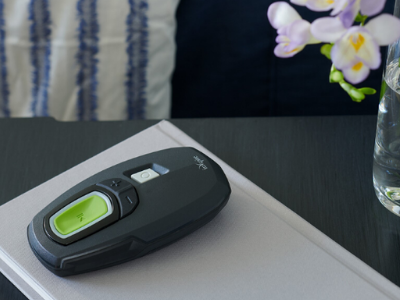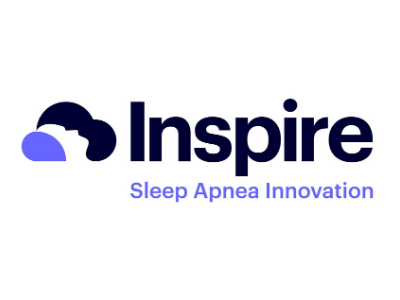
Inspire Candidates
Visit inspiresleep.com to learn more.

Add content such as text and links.
Sleep apnea occurs when you regularly stop breathing for 10 seconds or longer during sleep. It can be mild, moderate, or severe, depending on the number of times in an hour that your breathing stops (apnea) or becomes very slow (hypopnea). Apnea episodes may occur from 5 to a couple hundred times an hour.
There are three types of sleep apnea: obstructive sleep apnea, central sleep apnea, and mixed sleep apnea. This topic focuses on obstructive sleep apnea, which is also called OSA (the most common form of apnea).
Obstructive sleep apnea is a potentially serious sleep disorder that affects 22 million Americans. When left untreated, it can lead to devastating effects on heart and brain health, impair quality of life and increase motor vehicle and occupational accident risk.
While Continuous Positive Airway Pressure (CPAP) is an effective front line treatment, studies show that long term adherence rates are less than 50%. EAMC is now offering a breakthrough treatment option for obstructive sleep apnea patients unable to use or get benefit from CPAP called Inspire.

Visit inspiresleep.com to learn more.

A blockage or narrowing of the airways in your nose, mouth, or throat generally causes obstructive sleep apnea (OSA). This usually occurs when the throat muscles and tongue relax during sleep and block the airway. Sleep apnea can also occur if you have bone deformities or larger than normal tissues in your nose, mouth, or throat. For example, you may have large tonsils. During the day when you are awake and standing up, this may not cause problems. However, when you lie down at night, your tongue, uvula and any excess tissue (tonsils, etc.) can press down on your airway, blocking it and causing sleep apnea. Other factors that make sleep apnea more likely include being obese, using certain medicines or alcohol before bed, and sleeping on your back.
The main symptoms of sleep apnea are loud snoring and feeling very sleepy during the day. Your bed partner may notice periods when you stop breathing during sleep. Other symptoms may include tossing and turning during sleep, waking up with a headache, and feeling irritated and unrested. Children who have sleep apnea nearly always snore. Other symptoms may include difficulty breathing during sleep and restless sleep during which your child wakes up often. However, children may not appear to be very sleepy during the day, which is a key symptom in adults. The only symptom of sleep apnea in some children may be that they do not grow as quickly as they should for their age.
When you stop breathing or breathe very shallow during your sleep, it may result in less oxygen in your blood. Over time, this lack of oxygen can lead to serious health problems. If you have sleep apnea, you may be more likely to get high blood pressure (hypertension), high blood pressure in your lungs (pulmonary hypertension), abnormal heart rate, heart failure, coronary artery disease (CAD), and stroke. If you have sleep apnea, you may have difficulty concentrating and feel tired throughout the day. You may fall asleep during a conversation or while you are driving or working. You are also at higher risk for depression.
Your doctor will examine you and ask you and possibly your sleeping partner questions about your lifestyle, snoring, sleep behavior, and how tired you feel during the day. If your doctor thinks you may have sleep apnea, he or she may suggest a sleep study. A sleep study usually takes place at a sleep center, where you will spend the night. Sleep studies find out how often you stop breathing or have shallow breathing and how much oxygen you have in your blood during sleep. In special circumstances you may also have blood tests and X-rays.
If you have mild sleep apnea, you may be able to treat it on your own by losing weight, developing good sleep habits, and avoiding alcohol and certain medicines before bed. If you have moderate to severe sleep apnea, you may need to use a breathing device (continuous positive airway pressure (CPAP) that prevents your airway from closing during sleep. If a CPAP does not work, or if large tissues are blocking your airway, you may need surgery. EAMC also offers a breakthrough treatment option for obstructive sleep apnea patients unable to use or get benefit from CPAP called Inspire.